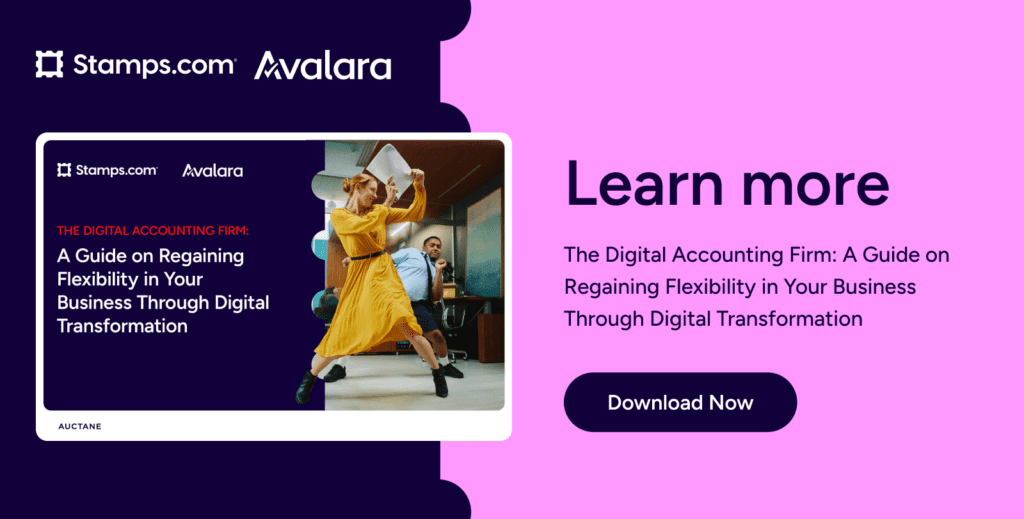
The highest performing accounting firms use productivity and technology 61% more than their competitors. Why? Because every second counts in the world of accounting.
When processes aren’t streamlined, you’re not just losing time—you’re reducing profitability. In this blog, we’ll dive into what the top productivity drains for accounting firms are. But don’t worry, there’s good news! With the right strategy, you can smooth operations that create happier clients and a healthier bottom line. Let’s explore the tools and strategies that can help you become a digital accounting firm that works smarter, not harder.
7 Technology Gaps That Are Draining Your Business
Manual Transactions and Bookkeeping
Manually entering transactions and managing bookkeeping is wasting valuable time. Manual data entry is a productivity killer, with each transaction posing a risk for errors and costly corrections, which leads to loss of client trust.
So what can you do? Automate bookkeeping and transaction management. Automation tools let you reclaim time and drastically reduce the risk of errors. Imagine transactions automatically synced with your accounting software. Now your team can focus on strategic advice and relationship building.
Lack of Real-Time Financial Insights
If your advisory services are not providing real-time data that customers are able to make advantageous decisions with, then you are being left behind. If a client comes to you for urgent advice but your data is outdated, you can’t provide them with a clear, real-time picture of their financial situation. When you’re reactive about your client’s current financial health, you miss opportunities that could make a significant impact. This limits your ability to act as a strategic advisor and the value you can bring to the table.
Implementing financial management systems that deliver real-time data and analytics is your answer to easily finding:
- Cash flow trends
- Financial issues early
- Growth opportunities
When you gain access to accurate and up-to-date financial data, you are in the driver’s seat. You’re a valuable asset when you create actionable insight clients can use.

Tedious Invoice Processes and Payment Tracking
If you don’t automate processes like invoicing and payment tracking, it means you’re spending a lot of time on tasks that don’t directly benefit your clients. On top of that, tracking billable hours can be difficult. Inaccurate time-tracking and inconsistent billing lead to lost revenue and client disputes. If your focus is on putting out fires and chasing up, you miss time on client relationships, business-building opportunities, and extra revenue. Manual processes mean you may increase the risk of:
- Mistakes
- Late payments
- Reconciliation errors
How do you overcome tedious processes? Solve tedious processes by automating them! Time-tracking software integrates with billing systems, keeps billing accurate so you don’t miss out on revenue, and frees up time for higher-value tasks. It will also let you and your clients track payments in real-time and give them a nudge without you having to lift a finger.
Integration of Disparate Systems
Technology can become a drag on your business operations if it’s not streamlined. Using multiple software tools for different processes like bookkeeping, tax filing, or client communication can create inefficiencies and data silos. These inefficiencies include:
- Delayed processes
- Incomplete data
- Missing information
- Data security risks
Each system might be excellent on its own, but if they don’t integrate well, you’re left managing multiple logins, transferring data between platforms, and hoping nothing falls through the cracks.
You can eliminate these issues by integrating your systems. Using software tools that work together seamlessly allows for a smoother flow of information. When your systems talk to each other, your business operates like a well-oiled machine, making it easier to focus on delivering accurate services to your clients.
Inefficient Client Communication and Document Management
Dealing with scattered records creates delays, increases the risk of mistakes and miscommunication, and makes it difficult to find documents when you need them. You spend precious time sending reminders, sifting through emails, and manually following up, rather than focusing on the work that actually drives value for your clients. Here are some signs that your processes need some attention:
- There’s regular confusion for both your firm and your clients
- You find a lot of information gaps that require retracing ground or missed opportunities
- You’re missing communications from the client or internally between staff
- There are internal and external reporting inaccuracies that impact the quality of your work
Setting up a secure client portal that centralizes document management eliminates the need for endless email chains and back-and-forth—plus it’s much faster and more accurate. A secure platform for document uploads and communication streamlines client interactions so you have up-to-date information and smoother workflows.
Stamps.com and accounting firms can work seamlessly together to process on-demand postage and batch label printing. Instead of making trips to the post office, you can print and send mail right from your office, saving time and ensuring documents reach clients and agencies without delay.
Regulatory Compliance and Tax Filing Complexities
The world of tax law and regulatory requirements is a constantly shifting landscape. Keeping up can be a full-time job in itself, and any slip-up can have serious consequences. Staying compliant can be overwhelming, as it’s easy to miss critical updates or forget to file on time. You might run into costly mistakes like:
- Penalties
- Interest charges
- Reputational damage
- Investigations
- License or accreditation loss
The best solution to avoid these issues is to implement software and compliance automation tools. These platforms do the cross-checking for you and often include built-in safeguards. To help you save time and reduce errors, they automatically adjust calculations to meet current compliance requirements and deadlines.
Inefficient Workflows and Lack of Standardization
Without standardized processes, team members may use different methods for the same task. Some use spreadsheets, while others rely on paper, and a few have their own methods of managing client data. This leads to confusion, delays, and mistakes. Outdated, manual processes also waste time and make it harder to decipher important information.
A workflow standardization framework can help. Start by mapping out the most common tasks and creating uniform processes for how they should be completed, regardless of who’s doing the work. Having a predictable workflow that everyone can follow will reduce these inefficiencies and confusion.
Start Optimizing Now and Plug Those Drains
Productivity drains for accounting firms are due to outdated, manual processes. These inefficiencies reduce profitability and impact client satisfaction.
To overcome these challenges, firms must adopt automation and streamline workflows. By integrating modern tools and real-time systems, you can boost productivity, reduce errors, and focus on high-value tasks, ultimately improving client service and long-term relationships.
Ready to reclaim your time and drive growth? Download the Stamps.com ebook, The Digital Accounting Firm: A Guide to Regaining Flexibility Through Digital Transformation, to learn how digital tools can enhance your firm’s productivity and profitability.



